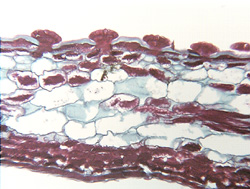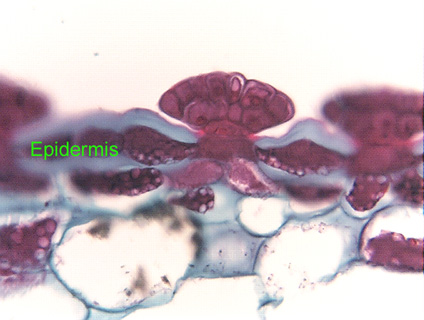

Fig.
9.4-2. Transverse section of leaf of Venus’
flytrap (Dionaea muscipula). These are glands on the surface
of the insectivorous plant, Venus’ flytrap. These leaves have three types of
trichomes, only two of which are secretory.
1. On the very margin of each half of the leaf are glands
that look like the ones shown here: these are alluring glands – they secrete a
substance that attracts insects to the trap.
2. On each half of the trap-leaf are three long trigger hairs
– once an insect agitates one or two of these sufficiently, the trap springs
shut. They are not secretory.
3. Most of the upper surface of each half of the leaf is
covered with the glands shown here – these are the digestive/absorptive
glands. They secrete digestive enzymes, and once those have had their effect,
the glands absorb the liquefied parts of the animal.